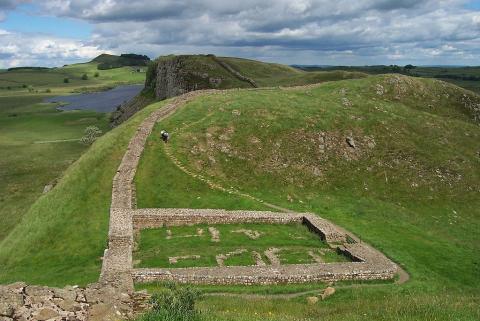Publius Aelius Traianus Hadrianus
AD76 ~ AD138
Publius Aelius Traianus Hadrianus born in 76 and ruled as emperor from 117 to 138.He was a distant relative to Trajan, and according to Trajan’s wife, was named emperor immediately before Trajan’s death though historians have never been able to confirm this series of events.
Even though he was born in Spain, he was so interested in Greek literature during his schooling he was nicknamed Graeculus, meaning “Little Greek”. During the reign of Domitian, he enlisted in the army serving the Roman legion Legio II Adiutrix and was then transferred to the Legio I Minervia in Germany. He personally informed Trajan of Nerva’s death in 98 and later won awards from Trajan for his many strategic successes on the battlefield.
After the death of Trajan, Hadrian almost instantaneously had the support of the legions. During his reign he was left to suppress the Jewish revolt that began during the reign of Trajan and also sort out the Danube frontier.
The Pantheon in Rome owes its grandeur to Hadrian who enriched the building and created what stands for the public to view today. He spent much of his life traveling before and during his reign, and most of his architectural designs would have been influenced by ideas he had picked up during these travels.
In 138 Hadrian died of natural causes leaving his rule to Antoninus Pius who he had adopted in the months prior to his death.
Born in 76 AD, Hadrian succeeded Trajan as Roman emperor in 117 AD and strove to unify and consolidate Rome's vast empire.
Synopsis
Born in 76 AD near what is now Spain, Hadrian succeeded his uncle Trajan as Roman emperor in 117 AD and worked to unify and consolidate Rome's vast empire. He oversaw construction of a number of Roman landmarks, including Hadrian's Wall, which ran along the northern edge of Roman territoRYRemains of Roman forts along that road still exist at Corbridge and Vindolanda (where excavations are ongoing).
But Stanegate Road did not keep out intruders. As a result, in approximately 122 A.D., while on a visit to the province of Britannia, the Roman Emperor Hadrian ordered a 73-mile wall (80 miles using Roman numbers or 118 kilometers using metric) to be built slightly north of Stanegate Road from Bowness (on the Solway Firth) in the west to Wallsend (on the River Tyne) in the east.
Part of the sea-to-sea wall (from Bowness to Birdoswald) was originally made of turf. The rest was made of stone.
Although sections of the stone wall remain, especially near Housesteads (which was called Vercovicium by the Romans), centuries ago people living close to the wall removed its stones to build castles, houses and churches.
What was it like at Hadrian's Wall?

No comments:
Post a Comment